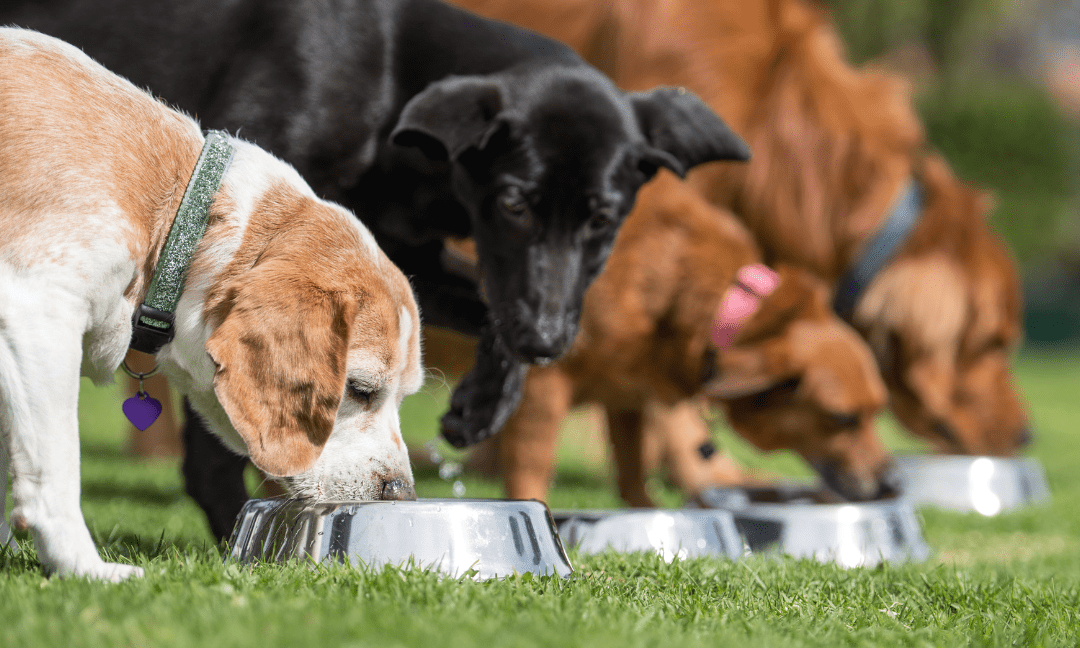Knowing what you feed your pet is vital if you are a dog owner. Pet food has many forms, shapes, and textures, sometimes making it hard to decide whether to give your beloved friend wet food, dry food, or a mix of both. This choice matters because the right food can significantly affect your dog’s health, energy, and happiness. Wet and dry dog foods are two common options out there. But how do they differ? Which one will be best for your pet? Understanding the difference between wet and dry dog food can help you make the best decision for your furry friend.
What is Dry Dog Food?
Dry dog food, or kibble, is popular among many pet owners. It’s made by combining raw ingredients, such as meat, grains, legumes and others, which are then cooked and dried. This process results in crunchy food that’s more convenient to use, has a lower price and can be easier to digest for your dog.
Pros of Dry Dog Food:
- Cost-effective: Dry food is typically cheaper than wet food, making it a more economical choice for larger dogs or multi-dog households.
- Dental Health: Dry dog food’s texture can help clean your dog’s teeth, potentially reducing the risk of dental issues.
- Convenience: Dry pet food has the advantage of long shelf life and convenient storage, making it a perfect choice for those who prefer to purchase in large quantities.
Cons of Dry Dog Food:
Less Hydrating: Dry food contains less moisture than wet food, which could lead to dehydration if your dog needs to drink more water.
Lower Palatability: Some dogs may find dry food less appealing than wet food, especially picky eaters.
What is Wet Dog Food?
Wet dog food, typically packaged in cans or pouches, contains more water than dry food. It’s usually made from meats and vegetables, making it a tasty option for our canine companions that is easier to eat and satisfies their hunger better.
Pros of Wet Dog Food:
- Hydrating: Wet dog food is approximately 70-80% water, helping to keep your dog hydrated.
- Highly Palatable: Many dogs prefer the taste and texture of wet food, making it a good choice for fussy eaters. It also helps satisfy their hunger better.
- Lower in Carbohydrates: Wet dog food often contains fewer carbs than dry food, which can benefit dogs with specific dietary needs.
Cons of Wet Dog Food:
- Cost: Wet food is typically more expensive than dry food, especially for larger breeds that require more food.
- Shorter Shelf Life: Once opened, wet food needs to be used within a few days, unlike dry food, which can last for weeks or even months.
- Dental Issues: It doesn’t provide the same teeth-cleaning benefits as dry food, potentially leading to dental problems.
Choose Food for Your Dog Based on What They Need
The best food for your dog depends on what your dog needs. Both wet and dry dog food have advantages and disadvantages. If your dog is a picky eater, has specific dietary needs, or struggles to stay hydrated, wet food could be a good option. On the other hand, if you’re looking for a cost-effective solution that’s convenient to store and helps with dental health, dry food might be the way to go.
Remember, it’s always best to consult your vet before significantly changing your dog’s diet. They can offer advice considering your dog’s type, age, size, and general health condition. Whether you choose between wet or dry dog food, the key is ensuring your pet gets a well-rounded and healthy diet.


